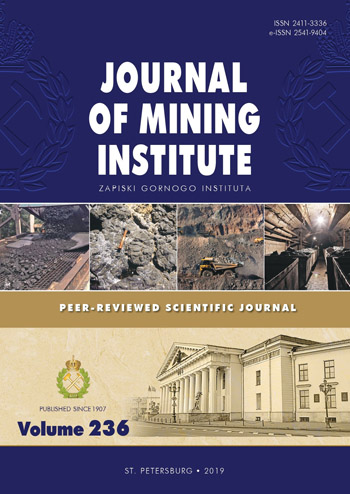Estimation of critical depth of deposits by rock bump hazard condition
- Ph.D., Dr.Sci. Professor Belgorod State National Research University
Abstract
During the development of minerals by the underground method, dynamic manifestations of rock pressure occur at a certain depth, which significantly reduces the safety of mining operations. Regulatory documents prescribe at the exploration and design stages to establish the critical depth for classifying a deposit as liable to rock bumps. Currently, there are a number, mainly instrumental, methods for determining the liability of rock mass to rock bumps and methods based on the determination of physical and technical properties and the stress-strain state of rock massifs. The paper proposes a theoretical method for determining the critical depth for classifying a deposit as liable to rock bumps. A formula for determining the critical depth of the rock bump hazard condition is obtained. A mathematical analysis of the influence of the physical and technical parameters of the formula on the critical depth is carried out. Its physical and mathematical validity is substantiated. The numerical calculations of the critical depth for 17 developed fields were carried out using a simplified formula. It also provides a comparison of calculated and actual critical depth values. It is established that the variation of the actual and calculated critical depth is due to the lack of actual data on the value of the friction coefficient and parameters of fracturing of the rock mass in the simplified formula. A simplified calculation formula can be used to estimate the critical depth of a field at the survey and design stages. More accurate results can be obtained if there are actual data on fracture parameters, friction coefficients and stress concentration near the working areas.
